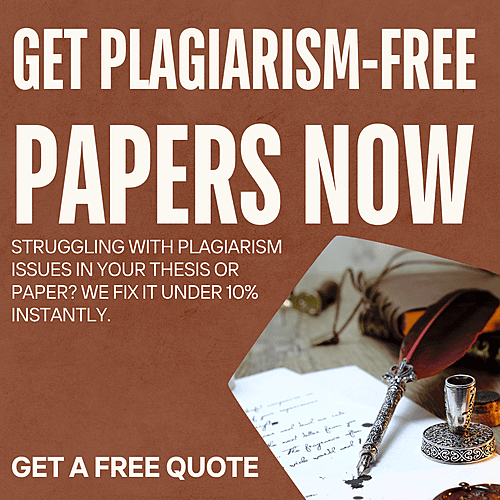Academic integrity is the backbone of higher education. Yet, many students find themselves struggling with unintentional plagiarism during thesis writing. Whether it’s due to improper citation, paraphrasing errors, or over-reliance on sources, plagiarism can jeopardize years of research. If you’ve been wondering how to correct plagiarism in thesis without sacrificing your personal writing style, this comprehensive guide will walk you through practical solutions.
Understanding the Importance of Originality in a Thesis
Originality is not just about avoiding plagiarism—it’s about demonstrating your ability to think critically and contribute new insights to your field of study. Academic institutions view plagiarism as a serious offense that can lead to rejection, loss of credibility, or even expulsion.
By understanding why originality matters, you can take proactive steps to ensure your thesis reflects your authentic voice.
Identifying Plagiarism in Your Thesis
Before correcting plagiarism, you must identify it.
Here’s how to detect it effectively:
Use Plagiarism Checker Tools – Tools like Turnitin, Grammarly, Scribbr, and Copyscape can scan your work against millions of sources.
Check for Improper Citations – Even if you cite a source, missing quotation marks or incorrect referencing formats can trigger plagiarism flags.
Review Paraphrasing Quality – Overly close rewording of source text can be considered plagiarism, even if citations are provided.
How to Correct Plagiarism in Thesis: Step-by-Step
Correcting plagiarism is a deliberate process that focuses on rewriting and refining without losing the intended meaning or academic depth.
1. Understand the Plagiarism Report
Once you run your thesis through a plagiarism detection tool, review the highlighted sections.
Focus on high-percentage matches.
Separate common knowledge from unique text.
2. Rephrase With Your Own Voice
The best way to correct plagiarism is to rewrite the section in your own words:
Avoid replacing words with simple synonyms.
Break down complex sentences and restructure them.
Relate ideas to your personal research findings.
3. Use Proper Citations
Always follow the referencing style required by your university (APA, MLA, Chicago, Harvard, etc.):
Quote exact phrases with quotation marks.
Include in-text citations and a proper bibliography.
4. Integrate Your Insights
If you rely heavily on sources, insert your analysis or interpretation after citing the reference. This strengthens your voice and reduces dependency on existing literature.
5. Use Paraphrasing Tools Wisely
AI-based paraphrasing tools (like QuillBot or Wordtune) can help, but don’t rely on them entirely. Always review the output to ensure it matches your academic tone.
Tools to Help You Correct Plagiarism
Here are some recommended tools to detect and fix plagiarism:
Turnitin – Widely used in universities worldwide.
Grammarly Premium – Detects plagiarism and improves grammar.
Scribbr – Offers plagiarism checks with a detailed originality report.
Copyscape – Ideal for quick checks.
How to Maintain Your Original Voice While Correcting Plagiarism
Maintaining your personal style is key to making your thesis unique:
Write From Memory First – Read your sources, close them, and then write from memory to ensure originality.
Blend Multiple Sources – Synthesize information from different references instead of relying on one.
Reflect on Your Findings – Add personal research insights in every section to maintain your academic identity.
Avoid Over-Quoting – Limit direct quotes to essential parts only.
Common Mistakes to Avoid
When learning how to correct plagiarism in thesis, students often make these errors:
Relying solely on paraphrasing tools without reviewing output.
Forgetting to cite rephrased content.
Using too many quotations, which dilutes originality.
Not verifying plagiarism percentage after corrections.
Final Checklist for a Plagiarism-Free Thesis
- Before submission, ensure you:
- Run the final draft through a plagiarism checker.
- Review all citations and references for accuracy.
- Verify originality score meets your university’s requirement.
- Read the thesis aloud to check for tone consistency.
Conclusion
Correcting plagiarism is not just about avoiding penalties—it’s about showcasing your research skills and academic voice. By following the above steps on how to correct plagiarism in thesis, you can ensure your work is 100% original, well-researched, and representative of your unique perspective.
Remember, originality is your strongest academic asset—protect it.



